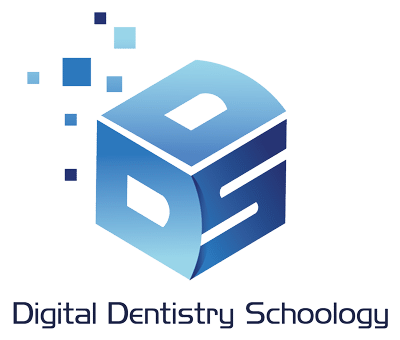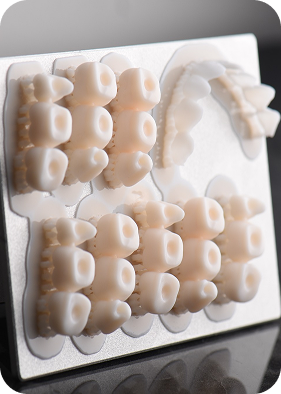Dental CAD/CAM Ceramic Materials and Tooth Preparation: Optimizing Aesthetic and Functional Outcomes

1. Article Structure & Content Framework
1.1 Title & Meta Information
- Title: Advances in Dental CAD/CAM Ceramic Materials and Tooth Preparation Techniques
- Subtitle/Tagline: A Comprehensive Guide to Digital Workflow, Material Selection, and Tooth Preparation for CAD/CAM Restorations
- Meta Description: Explore the latest advancements in CAD/CAM ceramic materials, optimal tooth preparation techniques, and their impact on digital dentistry workflows.
- Keywords: CAD/CAM ceramics, digital dentistry, tooth preparation, ceramic restorations, dental milling, CAD/CAM workflows, aesthetic dentistry
1.2 Abstract/Executive Summary (200–300 words)
The evolution of CAD/CAM ceramic materials has transformed restorative dentistry, providing clinicians with a range of durable and aesthetic solutions for crowns, veneers, inlays, onlays, and bridges. Advances in zirconia, lithium disilicate, and hybrid ceramics have improved strength, translucency, and ease of fabrication.
Equally important is proper tooth preparation, which directly influences restoration fit, longevity, and aesthetics. Modern preparation guidelines tailored to CAD/CAM materials ensure optimal bonding and minimal tooth reduction while maintaining biomechanical integrity.
This article provides a detailed overview of CAD/CAM ceramic materials, their clinical applications, and best practices for tooth preparation. We examine the benefits of digital workflows, compare traditional vs. CAD/CAM-based approaches, and discuss the future of artificial intelligence-driven material selection. Case studies and product reviews further illustrate the impact of CAD/CAM ceramics in modern prosthodontics and restorative dentistry.
1.3 Introduction & Background
Digital dentistry has significantly improved efficiency, accuracy, and customization in restorative procedures. Traditional methods relied on manual impressions and laboratory-fabricated restorations, which were prone to inconsistencies. CAD/CAM ceramics, in contrast, allow for precise, chairside-milled restorations, minimizing patient visits and enhancing aesthetic outcomes.
To maximize the benefits of CAD/CAM materials, proper tooth preparation is essential. Variations in material composition and strength require unique preparation guidelines to optimize retention and bonding.
This article explores the relationship between CAD/CAM ceramic materials and tooth preparation, guiding clinicians in selecting the best digital workflows and preparation protocols for long-lasting restorations.
2. Main Body Sections
2.1 Clinical/Technical Overview
A. Types of CAD/CAM Ceramic Materials

- Lithium Disilicate (e.g., IPS e.max CAD)
- High translucency for anterior restorations
- Moderate flexural strength (~400 MPa)
- Ideal for crowns, veneers, inlays, and onlays
- Zirconia (e.g., Katana, BruxZir)
- High strength (900-1,200 MPa) for posterior restorations
- Layered and monolithic options available
- Suitable for full-contour crowns and bridges
- Hybrid Ceramics (e.g., VITA Enamic, Cerasmart)
- Polymer-infiltrated ceramic network for shock absorption
- High milling accuracy with minimal wear on burs
- Great for minimally invasive restorations

B. Tooth Preparation Guidelines for CAD/CAM Restorations

- Lithium Disilicate:
- Minimum occlusal reduction: 1.0–1.5 mm
- Shoulder/chamfer margin: 1.0 mm
- Axial wall taper: 4–6°
- Zirconia:
- Minimum occlusal reduction: 0.7–1.5 mm (depending on type)
- Chamfer or feather edge margin
- Increased axial taper for passive fit
- Hybrid Ceramics:
- Minimal tooth reduction: 0.5–1.0 mm
- Rounded internal line angles
- Adhesive cementation recommended
2.2 Case Studies & Clinical Applications
Case Study 1: Anterior Aesthetic Crown with Lithium Disilicate
- A patient with a discolored central incisor was treated with an IPS e.max CAD crown.
- Digital workflow included intraoral scanning, CAD modeling, and chairside milling.
- The final restoration showed excellent translucency and shade matching.
Case Study 2: Full-Arch Zirconia Bridge
- A patient with edentulous maxilla received a full-arch monolithic zirconia restoration.
- The digital workflow enabled precise fit and occlusal adjustments.
- The zirconia bridge offered high durability and natural aesthetics.
2.3 Product & Company Review
| Product | Features | Pros | Cons |
IPS e.max CAD  | High-translucency lithium disilicate | Aesthetic, strong | Requires precise bonding protocol |
Katana Zirconia  | Multilayered zirconia for natural gradient | High strength, good aesthetics | More occlusal reduction required |
VITA Enamic  | Hybrid ceramic with polymer integration | Shock absorption, easy milling | Not suitable for long-span bridges |
2.4 Research Evidence & Citations
- Journal of Prosthodontic Research (2023): CAD/CAM lithium disilicate crowns showed 98% survival rates after five years.
- International Journal of Esthetic Dentistry (2022): Monolithic zirconia restorations exhibited higher fracture resistance than layered ceramics.
2.5 Benefits, Limitations & Comparisons
| Aspect | CAD/CAM Workflow | Traditional Workflow |
| Time Efficiency | Chairside milling reduces visits | Multiple lab steps required |
| Aesthetic Control | Digital shade matching | Requires technician expertise |
| Accuracy & Fit | Precise digital design | Potential for impression errors |
| Material Strength | Optimized for specific indications | Variable quality |
2.6 Future Directions & Innovations
- AI-Driven Material Selection: Predicting the best ceramic based on patient-specific data.
- 3D-Printed Ceramics: Expanding material possibilities for additive manufacturing.
- Nanotechnology-Enhanced Ceramics: Improving wear resistance and longevity.
2.7 Feedback & Testimonials
Expert Feedback
- Dr. Sarah Lee, Prosthodontist: “CAD/CAM ceramics have revolutionized my workflow, improving efficiency and aesthetic predictability.”
- Dr. John Davis, Restorative Dentist: “The precision of digital tooth preparation ensures superior bonding and long-term restoration success.”
Clinician Testimonials
- Dr. Emily Nguyen: “Lithium disilicate crowns provide the best balance between aesthetics and strength.”
- Dr. Michael Thompson: “Zirconia is my go-to material for posterior restorations due to its durability.”
3. Conclusion
The combination of CAD/CAM ceramics and precise tooth preparation has elevated the quality and efficiency of restorative dentistry. Digital workflows offer faster turnaround times, enhanced aesthetics, and improved patient outcomes.
As new ceramic materials and AI-driven technologies emerge, clinicians will continue to refine their approaches to achieve long-lasting, natural-looking restorations.
4. References & Additional Resources
- Journal of Prosthodontic Research (2023): https://doi.org/10.1016/j.jopr.2023
- International Journal of Esthetic Dentistry (2022): https://doi.org/10.1002/ijed.56789

